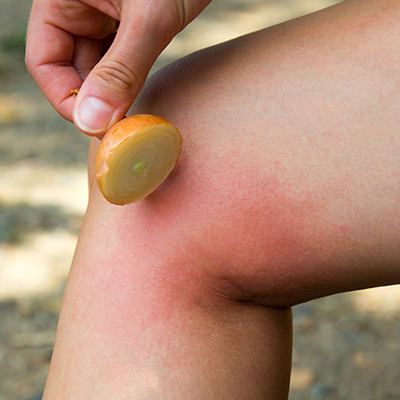How to Get a Splinter Out

Last updated September 7, 2023
Sometimes when you’re enjoying woodworking, gardening or DIY projects, you get a splinter. Knowing how to remove a splinter is important to prevent infection and end discomfort. Splinters are often pieces of wood embedded in the skin. They can also be thorns, shards of glass or metal or other materials.
Splinters don’t usually require medical attention. They can be challenging to remove though.
This guide will outline several ways to remove a splinter. This includes how to get a splinter out with tweezers. Learn tips for soaking the splinter or using a bandage as well. It’ll also walk you through splinter injury treatment.
Safety Tip: See a medical professional for splinters that are large, deeply embedded, difficult to remove or near the eyes.
Difficulty:
Beginner
Duration:
Under 2 hours
Table of Contents
Preparing to Remove a Splinter
Pull Out a Splinter
Soak for Splinter Removal
Bandage for Splinter Removal
Splinter Removal Tricks
How to Treat a Splinter Injury
Preparing to Remove a Splinter
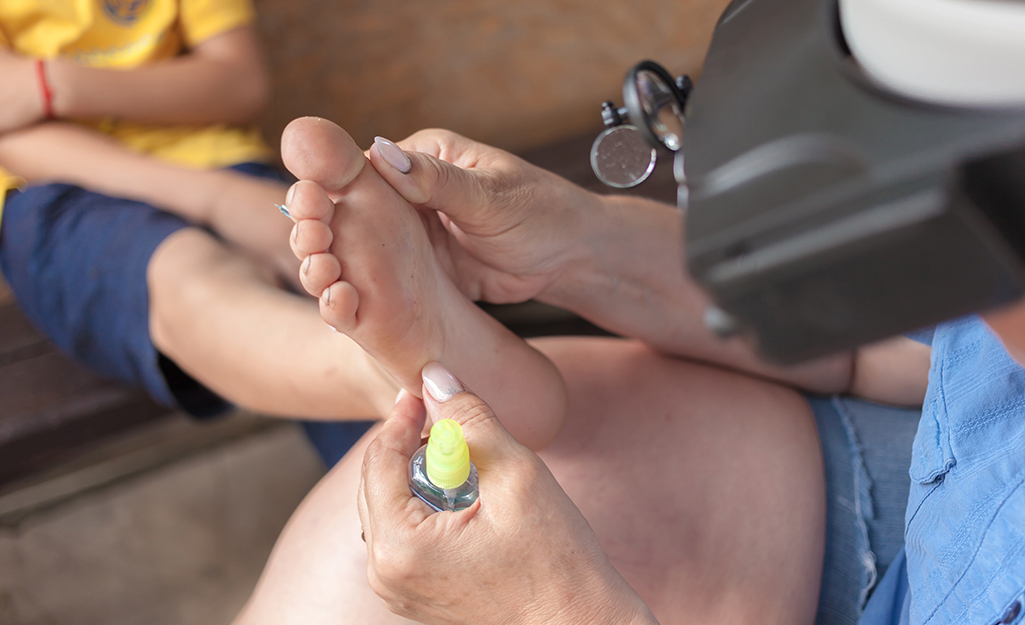
There are different ways to remove a splinter, but the preparation is the same for all of them.
Know where you keep your first aid kit for quick access.
- Wash your hands well with soap and water.
- Gently wash the area with the splinter with soap and water. This reduces the chance of infection and makes the splinter easier to see.
- Numb the area with ice or oral numbing gel if you’d like.
- Pat the skin dry. Be careful not to drive the splinter further into the skin.
- In a well-lit area, examine the splinter. A headlamp can shine light at the affected area while keeping your hands free.
- Use a magnifying glass or a lighted magnifying desk lamp when dealing with especially small splinters.
- Identify the direction of the splinter’s entry point, if possible.
- If you can’t see the splinter, try changing the angle of the light.
There are generally three methods of splinter removal: pull, soak or bandage. You may end up using multiple methods if the splinter is stubborn. Soaking softens skin for easier removal. Using a bandage plus another substance may soften or swell the skin to push out the splinter.
Pull Out a Splinter

The most well-known method of splinter removal tricks is to pull it out. Usually, you remove a splinter with tweezers. However, you might also use tape, glue, a needle or pliers.
The splinter removal method depends on the type and location of the splinter. Children with splinters may stay calmer with the tape or glue method.
How to Remove a Splinter with Tweezers or Pliers
Use this method if you can see the splinter sticking out of the skin.
- When removing a splinter with tweezers or other metal tools, always sterilize the instrument first.
- Swipe down the tweezers, pin or needle nose pliers with rubbing alcohol. You can also use boiling water or even an open flame. A gas stove or a cigarette lighter is useful when boiling water isn’t an option. However, if you use this method, let the tool cool off before using it.
- When using tweezers or pliers, grab the tip of the splinter.
- Hold the splinter firmly but gently.
- Pull the splinter in the direction opposite from where it went in.
- Even if it seems like the splinter is out, check the wound area carefully. You need to make sure no pieces are still under the skin.
How to Remove a Splinter with a Needle or Pin
Try this method if the splinter is just beneath the surface, under a flap of broken skin.
- Sterilize your needle using rubbing alcohol, boiling water or a flame. Let it cool if needed.
- Use the sterilized needle or pin to bend back the skin.
- You may need to use the needle to scrape on or around the entry point.
- If there isn’t one, create an opening deep enough to remove the splinter.
- The goal is to free the tip of the splinter so you can grab it with tweezers.
- If you can reach the splinter tip, pull it out with tweezers as outlined above.
Safety Tip: Don’t keep digging if the splinter is deeply embedded. Soak it to assist it to the surface or seek medical attention. Also, avoid squeezing or pinching the area to pop out the splinter. It can cause the splinter to split into smaller pieces that are harder to remove.
How to Remove a Splinter with Tape
If it’s tough getting a good grip on the splinter, try using duct tape or another adhesive tape. The method is also good for children with splinters.
- Get a small piece of tape. Make it big enough to cover the affected area and grip between your fingers.
- Center the tape over the splinter. Gently press the tape down over the area around the splinter.
- Take care not to press the splinter further into the skin.
- In the opposite direction of where the splinter went in, slowly peel back the tape.
- Check the tape and the skin to see if the splinter is removed.
- If the splinter came out, make sure no parts of the splinter remain under the skin.
- For a stubborn splinter, try soaking it before attempting another removal.
How to Remove a Splinter with Glue
For a splinter removal method from your school days, try getting out a splinter with glue. This also might be a more fun and less scary option for young kids.
- Cover the splinter with regular white school glue or craft glue. Don’t use any industrial glues or strong adhesives. A simple non-toxic glue is the way to go.
- After it dries, slowly peel off the glue. If you’re lucky, the splinter will come with it.
Soak for Splinter Removal
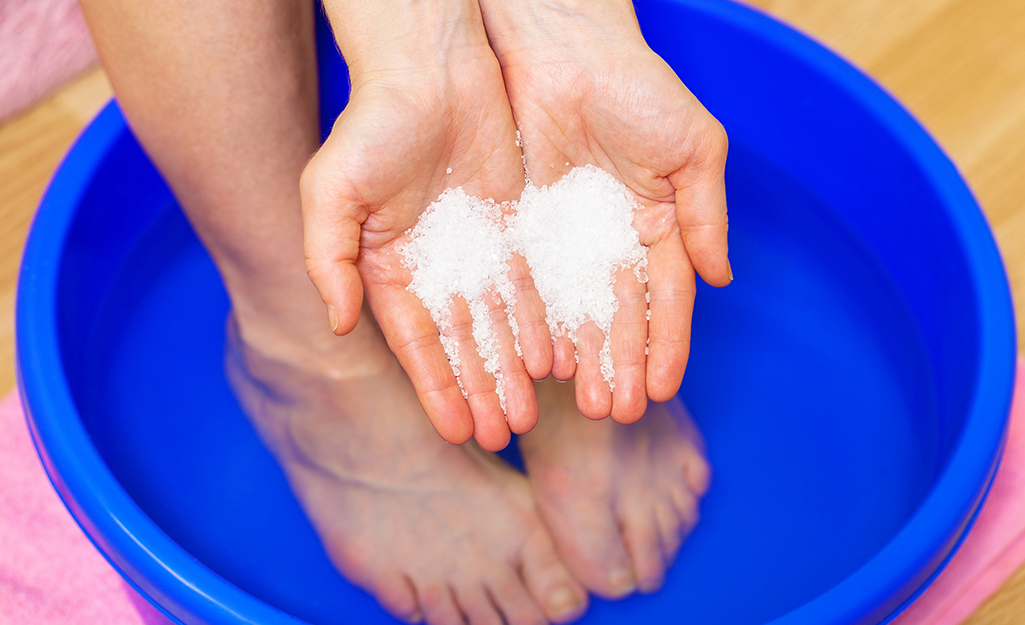
Soaking may work as a way to remove a splinter without tweezers. However, this method is best paired with the pull method of splinter removal. You soak the body part with the splinter. This either softens or swells the skin, bringing the splinter to the surface. What you soak the splinter in affects the skin and the splinter.
How to Get a Splinter Out with Hot Water
For any splinter, a quick soak in hot water can help coax it out. Soaking alone likely won’t get the splinter out, but it should make for a less painful removal. It's a way to soften the skin to get out the splinter easier. It might also help relax the person with the splinter.
Depending on where the splinter is, your method of soaking may differ.
- For a hand or foot splinter, soak it in a bucket or tub of water.
- If that’s not the best option, run some hot water in a clean bathtub or sink.
How to Get a Splinter Out with Epsom Salts
If you'd like, add Epsom salts to your hot water soak. The Epsom salt solution makes the skin softer while soaking into the splinter. This causes the splinter to swell up and makes it easier to grip.
- Dissolve a cup of Epsom salt in a tub of warm water. For a smaller soak, dissolve a tablespoon in a sink full of warm water.
- Soak the area with the splinter for 10 minutes or more as needed.
How to Get a Splinter Out with Vinegar
This soaking method can be used if you want a more disinfecting solution than water.
- Fill a bowl with vinegar.
- Soak the afflicted body part for up to 30 minutes.
- Check periodically to see if the splinter has come to the surface.
- If you can reach the splinter, pull it out.
How to Get a Splinter Out with Hydrogen Peroxide
The bonus of this method is the peroxide disinfects the wound as well. You can also try soaking a cotton ball in peroxide and leaving it on there. It’ll provide longer bubbling action to wiggle the splinter free.
- Hold the affected hand or foot over the sink or bathtub.
- Pour hydrogen peroxide over the splinter. The bubbles might loosen the splinter.
- When the splinter is loosened, try to pull it out.
Bandage for Splinter Removal
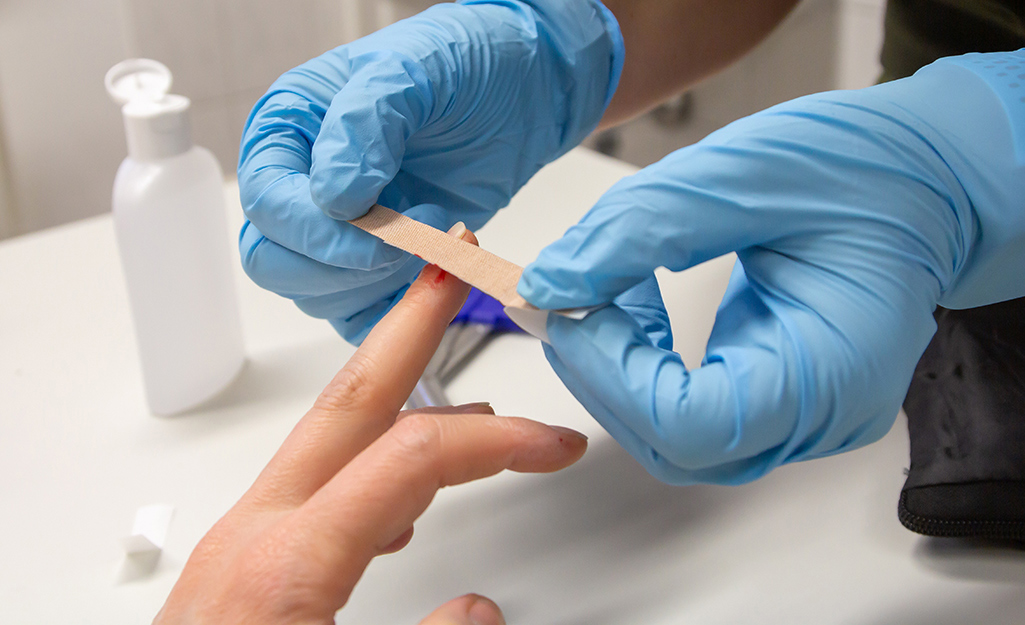
The third method of splinter removal is the bandage method. It’s usually tried after pulling out or soaking the splinter didn’t work. Apply one of many common household substances to the splinter. Then, cover it with a bandage overnight and wait.
How to Remove a Splinter with Baking Soda
Baking soda makes the skin swell. The splinter may come closer to the surface now, easier to get out.
- Make a paste with baking soda and water.
- Spread the paste over the splinter’s entry place.
- Cover the splinter with a bandage.
- Wait a day, then unwrap the bandage.
How to Remove a Splinter with Honey
For a sweeter way of removing a splinter, try honey. It’s a natural antiseptic. If you have manuka honey, use that. It allegedly has stronger antibacterial properties than regular honey.
- Similar to the baking soda method, spread the honey over the splinter.
- Cover it with a bandage that’s big enough to keep the honey from leaking out.
- Remove the bandage after a few hours. Overnight is best.
- Your softened skin may give up the splinter more easily now.
How to Remove a Splinter with Epsom Salt
This method will likely sting, so it’s not the best option for children. If the splinter is on part of your body that’s difficult to soak, try the bandage method with Epsom salts.
- Put Epsom salt on the splinter or a bandage pad. You can also wet a bandage in the Epsom salt solution.
- Cover the splinter with the bandage and wait. Check every hour or so, up to a day.
- The salt should have brought the splinter out enough that you can use tweezers.
How to Remove a Splinter with Ichthammol Ointment
This ointment softens skin so the splinter will come out easier. Always assure your ointment says “ichthammol” and “ammonium bituminosulfonate” in the ingredients before using it.
Ichthammol ointment stains, so take extra care that it’s completely covered and then some. It’s considered a homeopathic remedy, although it is available over-the-counter at a standard pharmacy.
- Spread the ichthammol over the splinter.
- Cover it well with a bandage. Like the honey, you don’t want this leaking out.
- Wait 24 hours, then uncover the splinter.
- Remove the splinter if it’s risen to the surface.
Safety Tip: Ichthammol is NOT the same as black salve or drawing salve. The FDA has warned against using black salve for any remedies.
How to Remove a Splinter with Oil
For a more moisturizing option, try using oil with a bandage to draw out the splinter. Use lavender and jojoba oil for a sweet-scented remedy. You can also try using olive oil or cooking oil.
- Spread the oil over the splinter.
- Cover the splinter with a bandage.
- Wait 20-30 minutes, then undo the bandage.
- If the splinter isn't out, repeat as needed.
Splinter Removal Tricks
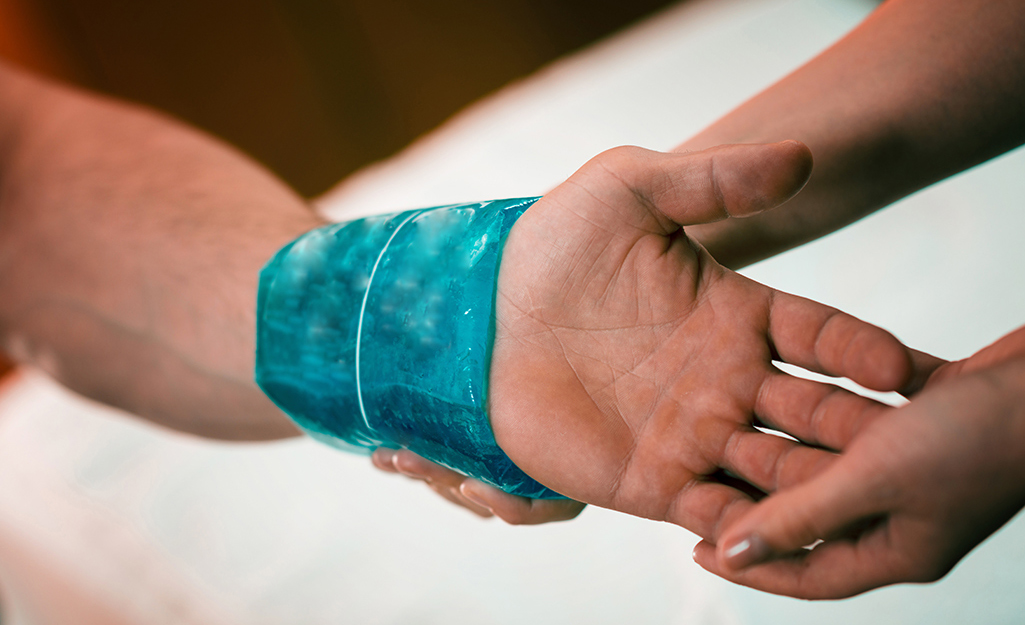
Sometimes tweezers will be unable to grip a splinter if it’s embedded deeply in the skin. This is where you can try a few things to make splinter removal easier:
- Try the soak or bandage method to help bring it to the surface.
- Numb the area with oral pain relief gel or ice.
- Soak the splinter to draw it out.
If you have a tiny splinter that isn’t painful, you can leave it in and wait for your skin to push it out over time. Keep the area clean and frequently check for redness, soreness or other signs of infection. Red lines coming from the splinter means it’s time to seek medical attention immediately.
How to Treat a Splinter Injury
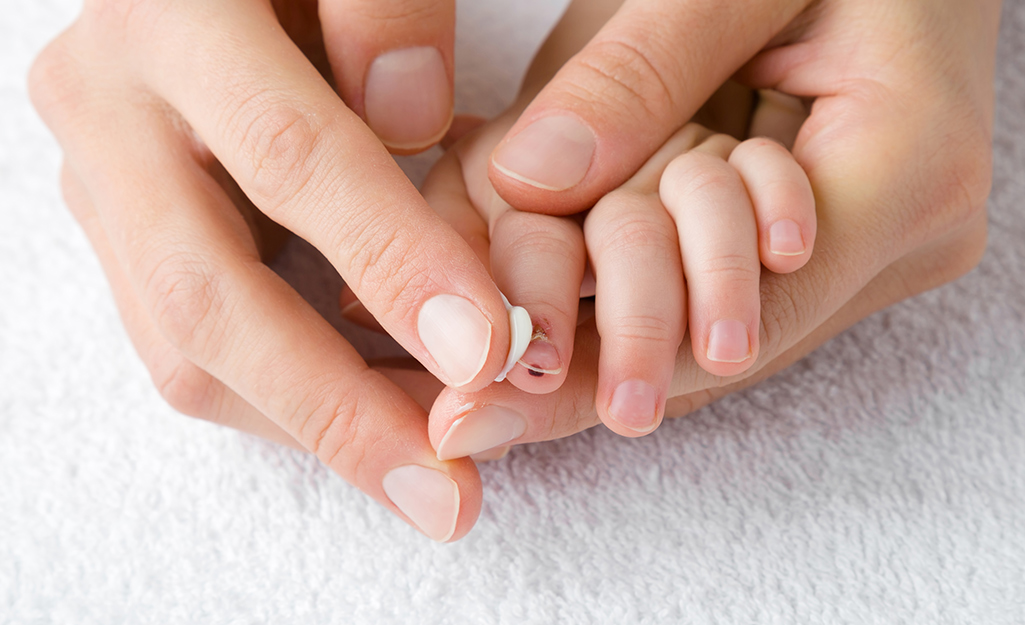
Now that you’ve gotten the splinter out, it’s time for a bit more first aid. It’s important to clean the sore where the splinter was.
- Wash the puncture wound with soap.
- Flush the wound with warm water for about a minute.
- Apply an antibacterial ointment. Reapply it twice a day.
- Place a bandage over the wound to keep the area clean and dry.
- If the area is bleeding after the splinter is removed, raise the afflicted body part above your heart.
- Place clean cotton balls over the wound. Wrap a gauze bandage to hold the cotton in place and apply pressure.
See a doctor if the splinter falls into any of these categories. You also may need a tetanus booster shot if any of these are true:
- The splinter is very large.
- The splinter is embedded deeply, more than 1/4-inches into the skin.
- The splinter is in or around one of your eyes.
Removing splinters is a useful skill, especially if you have children in the house. Knowing how to treat a splinter can mean the difference between a nuisance injury or a more serious one.
Keep your first aid kit stocked with tweezers and a magnifying glass so you’re prepared. You can find products fast with image search in The Home Depot Mobile App. Snap a picture of an item you like and we'll show you similar products.



